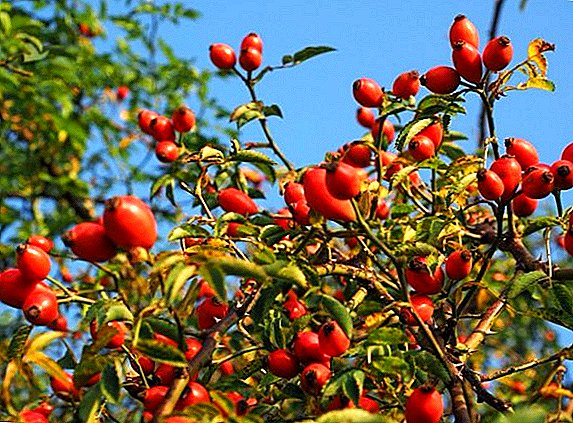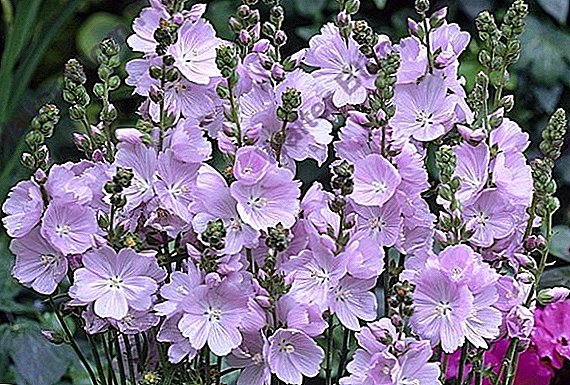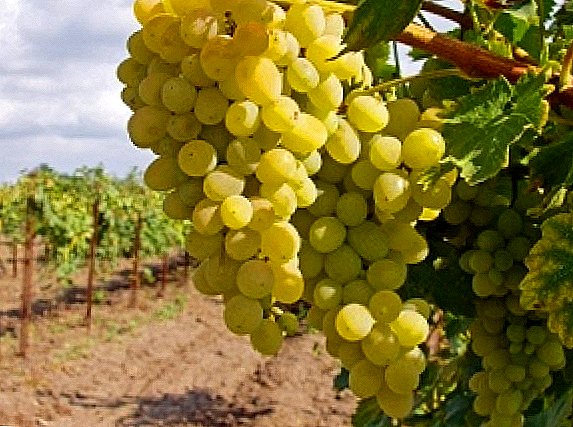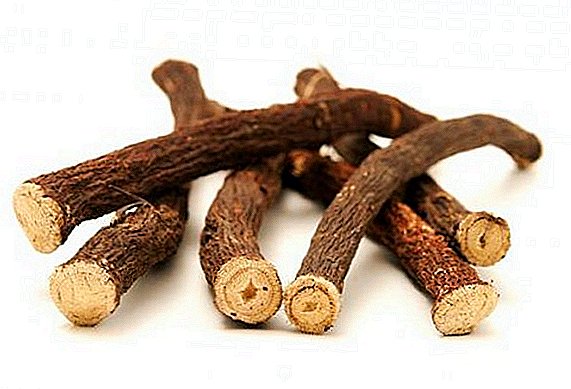 Snowdrop (Galantus) - herbaceous plant of the Amaryllis family, a genus of perennial grasses (in nature there are about 20 species, most of which grow in the Caucasus and Asia).
Snowdrop (Galantus) - herbaceous plant of the Amaryllis family, a genus of perennial grasses (in nature there are about 20 species, most of which grow in the Caucasus and Asia).
But how many species of snowdrops exist today, biologists cannot say, because they have several opinions on this matter. However, they all believe that the number of plant varieties exceeds 18. Many types of snowdrops are very similar to each other and have approximately the same size, and they received their names either from the place of growth or in honor of the people who discovered and researched them.
Snowdrops are one of the first flowers that bloom immediately after the snow cover disappears, and many people are able to easily recognize their photos, but for those who are not familiar with snowdrops, we give a brief description and the name of the most common species of this plant.
While admiring these fragile flowers, few people wondered what types of snowdrop are listed in the red book, although in fact, almost all of them, except the snow-white snowdrop, are noted in it. All species are threatened to some extent by extinction, since they are found in the wild only in certain areas in limited quantities, and deforestation, soil destruction in their habitats, environmental pollution and digging out their bulbs for cultivation at home can affect the extinction. such a plant as a snowdrop.
What a real snowdrop looks like for each of the main species we will now tell, and the attached photos will vividly demonstrate the beauty of these wonderful plants.
Did you know? The name "snowdrop" literally means "milk flower".
Snowdrop alpine
Alpine snowdrop (Galanthus alpinus) - herbaceous bulbous plant, the length of the bulb is 25-35 mm, and diameter - 15-20 mm. Broad-leaved leaves of dark green color, up to 7 cm long, although they are able to grow up to 20 cm after flowering. The peduncle reaches a length of 7-9 cm, the outer near-flower leaves are obovate, slightly concave, up to 20 mm wide, and up to 10 mm long, internal - less than half, wedge-shaped, with a recess surrounded by a greenish spot.
The plant begins to bloom 4 years after planting. It blooms in late winter-early spring with white flowers, besides, at the end of spring a fruit with small seeds appears. Reproduction is possible both by the seed method and by the vegetative method - with the help of bulbs-kids, which are formed in an adult plant. The homeland of the alpine snowdrop is the lower and alpine zones, as well as the Western Transcaucasia. 
Byzantine snowdrop
Byzantine snowdrop (Galanthus byzantinus) grows on the Asian coast of the Bosphorus. He is fond of growing flower growers in Western European countries, although in our country this species has not yet become widespread. Prefers soddennye open space. Byzantine snowdrop - the closest variety of folded.
The period of its flowering falls on autumn: first, a low peduncle with a green speck appears at the base of the inner perianth leaves. The appearance of the snowdrop is unusual: a white carved flower with many long petals. Leaves are green, narrow, about 5-6 cm long, upright. 
Caucasian snowdrop
Caucasian snowdrop (Galanthus caucasicus) - a plant with linear flat shiny leaves of green color, reaching a length of 25 cm. Yellowish bulb, up to 40 mm long, with a diameter of 25 mm. Peduncle 6-10 cm tall produces a white fragrant flower with a length of 20-25 mm and a diameter of about 15 mm.
Perianth segments on the inside are partially green in color. Flowering occurs from the end of March and lasts 12-15 days. Fruiting is irregular, and shelter is required for wintering. The Caucasian snowdrop habitat is more concentrated in the Central Caucasus.

Important! The bulbs of snowdrops are poisonous, so you should use protective gloves when transplanting this plant.
Snowdrop Bortkiewicz
Bortkevich's snowdrop (Galanthus bortkewitschianus) grows wild in the North Caucasus, preferring beech plantations. Its name was in honor of the dendrologist Bortkiewicz.
The bulb of the plant is about 30-40 mm long, with a diameter of 20-30 mm. The leaves of the snowdrop are a saturated green color with a bluish tint, lanceolate, during the flowering period their length is 4-6 cm, but after that, they grow to 25-30 cm in length and up to 2 cm in width. Peduncle grows about 5-6 cm tall with a wing and a 3-4 cm pedicel. A Bortkiewicz snowdrop flower can be characterized by the following description: the outer leaves of the perianth are concave, back egg-shaped, about 15 mm long and 8-10 mm wide, with a depression at the top and green coloring around the groove. 
Snowdrop Krasnova
Krasnov snowdrop (G. krasnovii) grows on the Black Sea coast of the Caucasus and Turkey, prefers beech, hornbeam and mixed forests. The flower was named after botanist A. Krasnov.
The bulb of the plant is 20–35 mm long, 20–25 mm in diameter, and the bright green leaf at the time of flowering reaches a length of 11–17 cm and a width of about 2 cm; after the end of flowering, the leaves grow to 25 cm. 15 cm, with a wing up to 4 cm long, with barely noticeable keels of green color. The outer leaves of the perianths are slightly concave, 2-3 cm long, and about 1 cm wide, the inner ones are elongated, with a pointed end 10-15 cm long and about 5 mm wide. Flowering occurs in early spring.

Snow white snowdrop
Snow-white snowdrop (Galanthus nivalis) most common in our country, growing rapidly, spreading to fairly large areas. Bulb - spherical, with a diameter of 10-20 mm. The leaves are flat, rich green in color, about 10 cm long, and the flower stalks grow to a height of 12 cm. The flowers are very large, up to 30 mm in diameter, and have a green spot on the edge of the perianth leaflet. Outer perianth leaves elongated, inner ones much shorter, wedge-shaped.
Snow-white snowdrop blooms earlier than other species, and the flowering period lasts up to 25-30 days. This species has many varieties and varieties. Reproduction occurs as a vegetative way, and seed, self-seeding is possible. 
Snowdrop broadleaf
Broadleaf snowdrop (Galanthus plathyphyllus) has a large bulb up to 5 cm long, from which erect leaves grow, of a saturated green color, up to 16 cm long. The tall peduncle (up to 20 cm) gives a large white bell-shaped flower, the outer petals of which have the shape of an ellipse and cover shorter and rounded internal. There are no notches on the petals, but there is a noticeable green spot.
A broad-leaved snowdrop blooms in late spring for 18-21 days. Fruits are not formed, the plant multiplies by the vegetative method. This species is common at the foot of the Alpine Mountains, ideal for growing in our latitudes in fertile loose soil with sufficient lighting.

Did you know? It was noticed that a longer and frosty winter prolongs the duration of the flowering of snowdrops in spring.
Folded snowdrop
Folded snowdrop (G. plicatus) is one of the highest species of snowdrops with a rather large flower and characteristic folded edges of the leaves. In the wild, it grows in the mountainous areas of Ukraine, Romania and Moldova.
The bulb of the plant is egg-shaped, up to 30 mm in diameter, covered with scales of light tones. The leaves are a pale green color with a bluish tint, but after the end of flowering their color becomes dark green. Peduncle grows up to 20-25 cm, and on it is a single fragrant, drooping flower, 25-30 mm long and up to 40 mm in diameter, which later gives the fruit-box with seeds.
Flowering begins in March and lasts about 20 days. Reproduction - seed and bulbous. The folded snowdrop grows thickly on the adjacent plot, up to 25 plants per 1 m ², which blooming form a beautiful flower bed.

Cilician's snowdrop
Cilician's snowdrop (G. Silicicus) grows in the foothills of the mountains of Asia Minor and Transcaucasia. Onion - wedge-shaped, 15-23 mm long, and with a diameter up to 20 mm. Linear leaves are matte green, grow up to 15 cm in length and up to 1.5 cm in width. Peduncle 14–16 cm long with a wing of 3 cm. The outer leaves of the perianths are 19–22 mm long, elongated and oval, tapering slightly at the base, the inner ones elongated, up to 10 mm long, have a depression at the apex with a partial green color. Flowering occurs in the middle of spring. 
Corfu's snowdrop
Corfuranus snowdrop (G. corcyrensis Stern) - got its name from the places of its growth - the island of Corfu, is also found in Sicily. Flowering occurs at the end of autumn, and the characteristic feature of this rare, endangered snowdrop is the simultaneous appearance of leaves and flowers. This species is medium in size, with a rather large flower up to 25-30 mm long and with a diameter of 30-40 mm. The inner petals have a peculiar pattern of green color.

Snowdrop Elweza
Elweza snowdrop (Galanthus elwesii) up to 25 cm high, grows on the territory of Eastern Europe, where it is cultivated. Leaves up to 30 mm wide, shade of blue. Flowers - spherical large, their length reaches 5 cm, very fragrant. Internal perianth leaves are marked with green spots. Flowering begins at the end of winter and lasts up to 30 days.

Foster's Snowdrop
Foster's Snowdrop got its name in honor of the collector M. Foster. The snowdrop of this species grows in the territory of Western Asia, but the cultivation of flowers occurs in the countries of Western Europe. Flowering begins in early spring and lasts up to 15 days.
The leaves are narrow, lanceolate, up to 14 cm long, while the peduncle reaches a length of 10 cm. The flowers are of medium size. The outer leaves of the perianth segments are concave, with characteristic green spots near the depression at the base, as well as at the top of the inner leaf.

Greek snowdrop
Greek snowdrop (Galanthus graecus) grows in the forest foothills of Greece, Romania and Bulgaria.
The bulb of the plant is oblong, up to 15 mm long and up to 10 mm in diameter. Leaves are gray-green, up to 8 cm long, and up to 8 mm wide, wavy sheet plate. Peduncle grows to 8-9 cm, the wing is about 3 cm. The outer narrow leaves of the perianth reach 25 mm in length, the inner ones are two times smaller.
Flowering begins in April and lasts up to 15 days. Reproduction - vegetative.
Important! The bulbs of snowdrops require a prompt landing within 12-18 hours after digging, since they dry out quickly and die out of the ground.
Ikari snowdrop
Ikaria snowdrop (Galanthus ikariae Baker) grows on the stony ground of the islands of Greece. In our country, not cultivated in the open field.
The bulb is 20–30 mm long and 15–25 mm in diameter; the leaves are a dull green color; they are up to 9 cm long before flowering and grow up to 20 cm after it. Peduncle reaches a height of 22 cm, wing - 2.5-4 cm. The outer leaves of perianth segments are concave, lanceolate, up to 25 mm long. The inner leaves are wedge-shaped, up to 12 mm long, have a green spot that occupies half of the leaf area. Flowering occurs in April. 
Lagodekhi snowdrop
Lagodekhsky snowdrop (Galanthus lagodechianus) grows at the foot of the Caucasus Mountains. Bulb length up to 25-30 mm, diameter of about 15 mm. The leaves are flat glossy, rich green in color, grow up to 8 cm during the flowering period and up to 30 cm after it. Peduncle about 8-9 cm, with a wing and peduncle 30-40 mm. The flowers of the Lagodekhsky snowdrop reach 30 mm in length, the outer narrow leaves are curved in shape, the inner ones are wedge-shaped, have a depression at the top with a green speck surrounding it.
Flowering occurs in early spring. Reproduction - vegetative. This species is one of the rarest in cultivation. 












